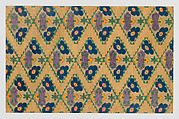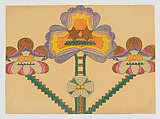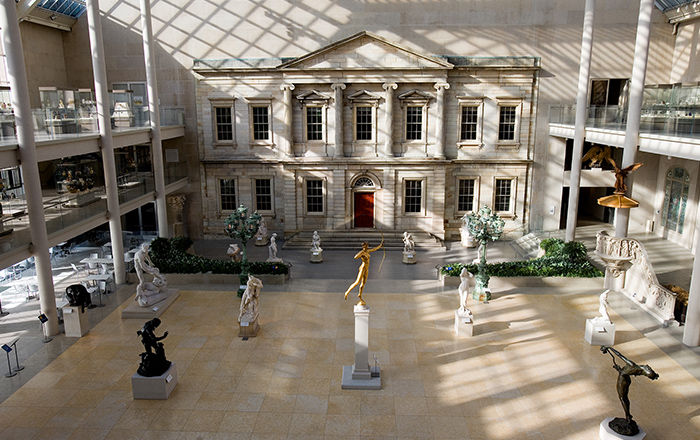Lunt & Fontanne (Alfred Lunt, 1892–1977, and Lynn Louise Fontanne, 1887–1983)
Mary Sully Native American
Mary Sully, born Susan Deloria on the Standing Rock Reservation in South Dakota, was a little-known, reclusive Yankton Dakota artist who, between the 1920s and the 1940s, created groundbreaking works informed by her Native American and settler ancestry. Working without patronage, in near obscurity, and largely self-taught, Sully produced some two hundred intricately designed and vividly colored drawings that complicate traditional notions of Native American and modern art. They mix meaningful aspects of her Dakota heritage with visual elements observed from other Native nations and the aesthetics of urban life. Euro-American celebrities from popular culture, politics, and religion inspired some of her most striking works, which she called “personality prints”—abstract portraits arranged as vertical triptychs. Together, Sully’s works offer a fresh, complex lens through which to consider American art and life in the early twentieth century.
Alfred Lunt and Lynn Fontanne were celebrated American stage and screen actors from the 1920s to the 1950s. They earned top billing as a husband-and-wife team and appeared, together and separately, in Broadway productions by some of the most famous playwrights of the day. Sully’s depiction of the celebrity couple includes a top panel with floral motifs and paired stars elevated by steps and platforms. The flower patterns are reconfigured in a complementary color palette in the middle panel, which emphasizes diamonds, zigzags, and triangular outlines. The bottom image, drawing on Plains Indian culture, presents two elaborately painted rawhide containers. They are thinly tied together, likely a reference to public speculation about the legitimacy of the actors’ marriage.
This image cannot be enlarged, viewed at full screen, or downloaded.
This artwork is meant to be viewed from right to left. Scroll left to view more.






